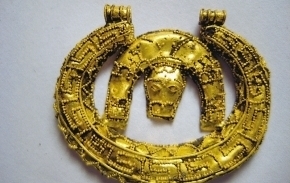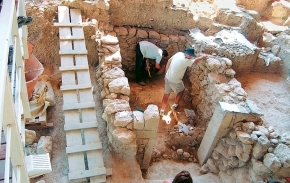 Necklaces with precious stones and gold lion heads changed the Greek history of the art of jewelry production. The accessories were found in an 8th century BC grave in ancient Eleftherna, near the Crete town of Retimno.
Necklaces with precious stones and gold lion heads changed the Greek history of the art of jewelry production. The accessories were found in an 8th century BC grave in ancient Eleftherna, near the Crete town of Retimno.
Scientists are trying to reveal who were the women buried wearing the most beautiful jewels from that epoch. Prof. Nikos Stambolidis, the director of the Museum of Cycladic Art, believes that they were priestesses. A thorough examination is in order before any conclusions can be made about the finds from this summer, but this cannot reduce the excitement of Prof. Stambolidis, says an article in "Ethnos" newspaper.
According to the New York University professor Notis Agelarakis, at least three skeletons were found in the grave with the jewelries. One of them is of a woman, more than 65 years old, and the other two are of young girls, around 16 or 17 years old. The reasons for their dead are not known, but it is presumed that hey were the priestesses of the founder of the town, Elefther, himself.
The find is extremely rich. Scarabaei in Egypt-blue, amber stones and mountain crystals with  ancient symbols were discovered. Together with them, gold jewelry was found, changing the history of the jewelry-production art of Greece. The finds reveal that craftsmen from 7-6th century BC were employing techniques that nobody knew until know existed back then. The ornaments are authentic, decorated with precious and semi-precious stones, as oppose to the fake jewelry that was usually placed in tombs at that time.
ancient symbols were discovered. Together with them, gold jewelry was found, changing the history of the jewelry-production art of Greece. The finds reveal that craftsmen from 7-6th century BC were employing techniques that nobody knew until know existed back then. The ornaments are authentic, decorated with precious and semi-precious stones, as oppose to the fake jewelry that was usually placed in tombs at that time.
Archeologists claim that the finds in Eleftherna are really important as a source of information about ancient Crete and that the site is so big that it will take several generations of archeologists to get a rough idea about how the ancient life was organized.